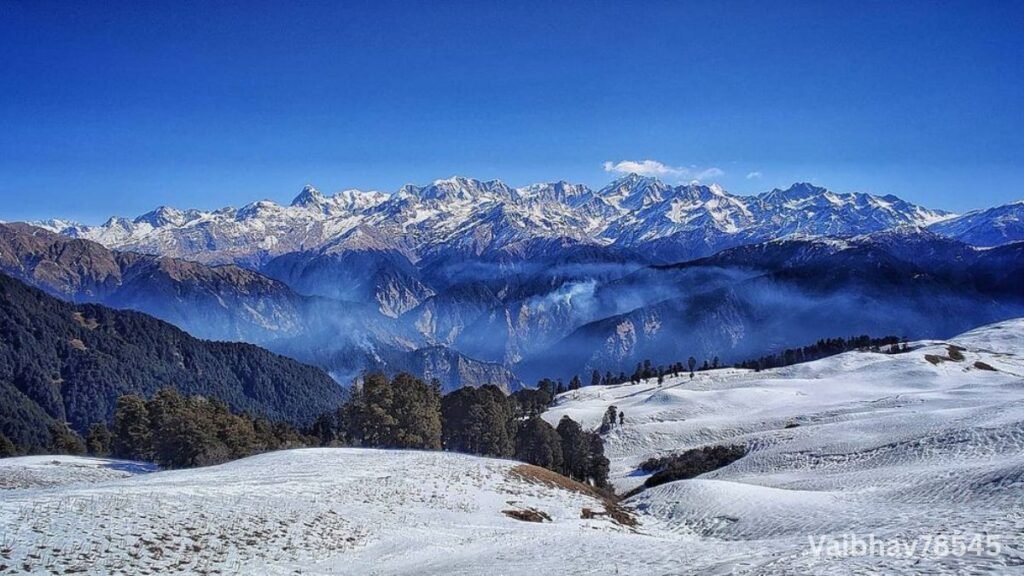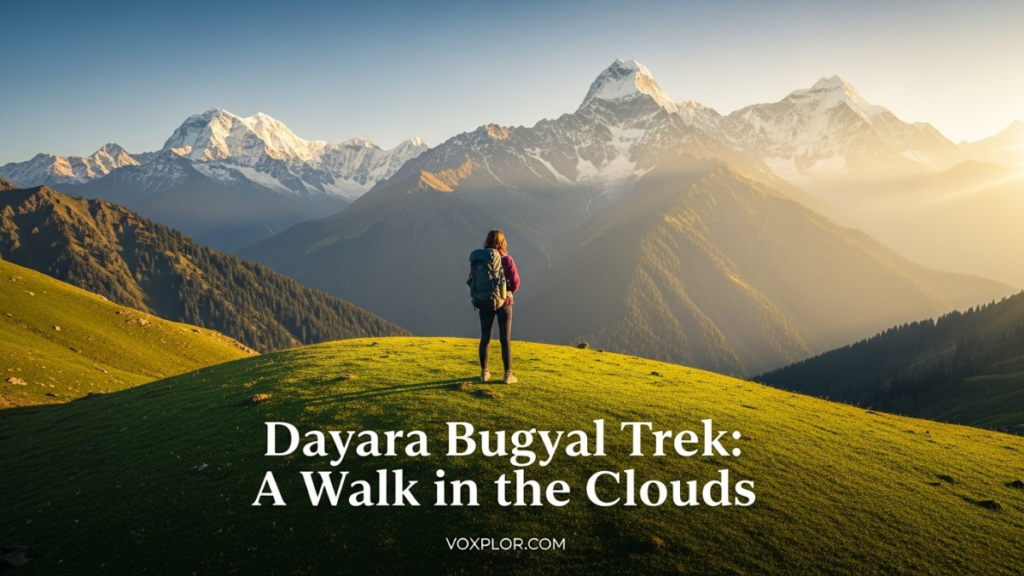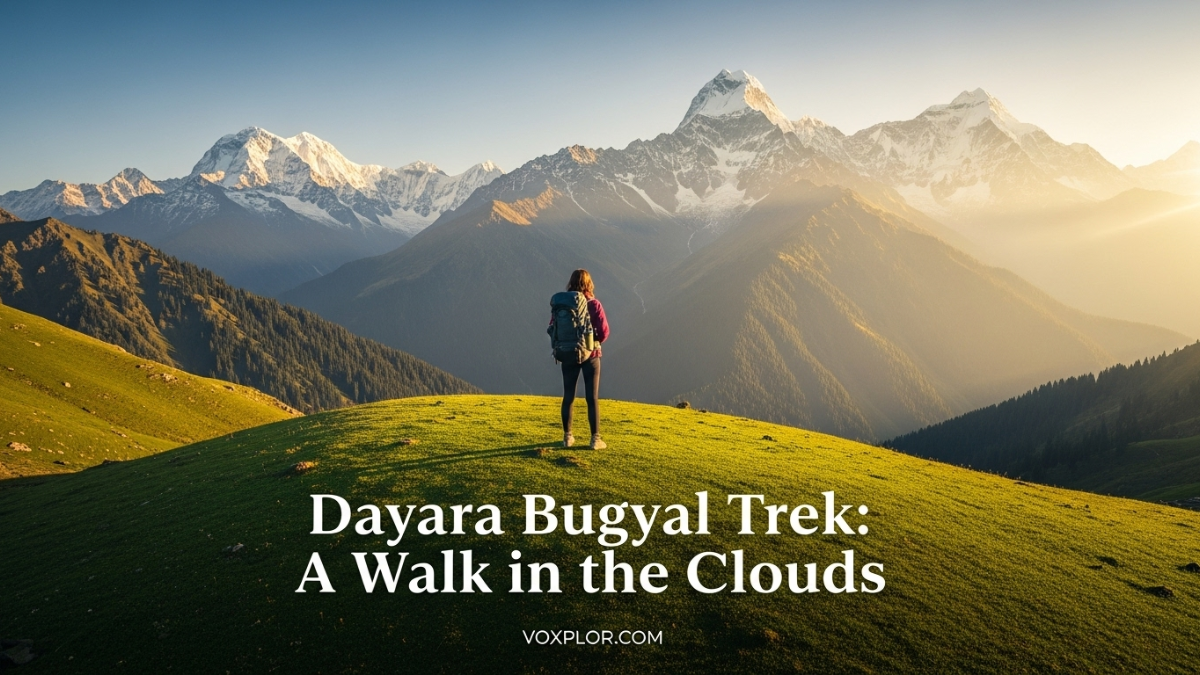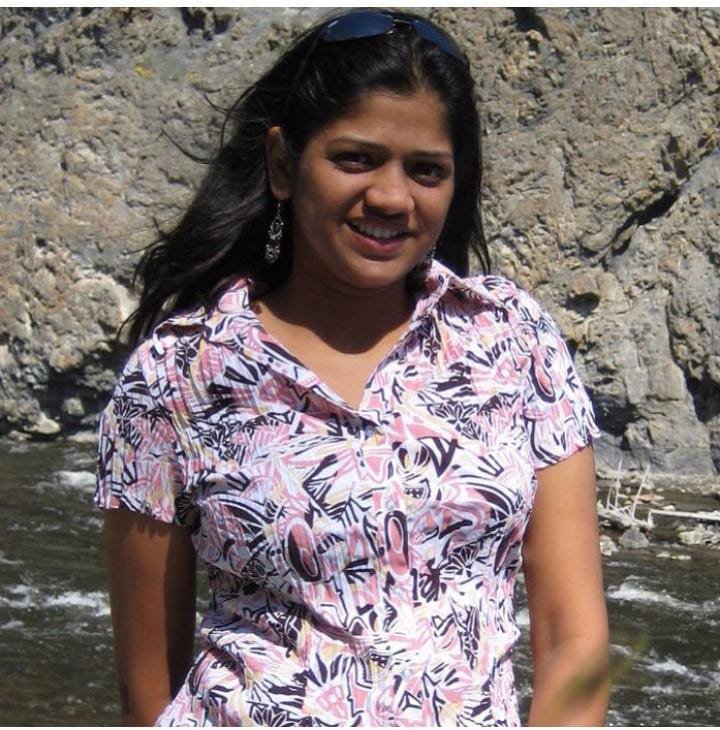Have you ever looked at a picture of the Himalayas and felt a pull, a whisper on the wind calling your name? I’ve felt it more times than I can count. But the daily grind, the endless to-do lists, and that nagging voice asking, “Am I even fit enough for a Himalayan trek?” always held me back. That is until I discovered the Dayara Bugyal trek.
Let me tell you, if there’s one trek that feels like the mountains are opening their arms for a warm, welcoming hug, it’s this one. It’s not about conquering treacherous peaks or pushing your body to its absolute limit. It’s about walking through enchanted forests, stepping out into what feels like an infinite sea of green, and witnessing a 360-degree spectacle of snow-capped giants that will leave you speechless.
Netravati Trek: The Ultimate Guide for Your Next Adventure
This isn’t just a travel guide; this is my story, my experience, and my promise to you that if you’re looking for a perfect first step into the world of Himalayan trekking, the Dayara Bugyal trek is it. It’s an adventure that’s accessible, breathtakingly beautiful, and perfect for beginners, families, and anyone with a soul that yearns for the hills.

So, What’s the Big Deal About Dayara Bugyal?
Before I jump into the nitty-gritty, let’s talk about why this place is pure magic. “Bugyal” in the local Garhwali language means a high-altitude alpine meadow. But that word doesn’t do it justice. Imagine a rolling carpet of velvety grass stretching farther than your eyes can see, dotted with tiny wildflowers in spring and summer, turning a surreal golden-brown in autumn, and covered in a pristine blanket of soft snow in winter.
It’s like a landscape straight out of a fantasy novel. Here’s why I believe the Dayara Bugyal trek should be at the very top of your list:
- Those Unbelievable Views: The climax of the trek is the panoramic view from the Dayara top. You are standing at nearly 12,000 feet, and laid out before you is a majestic audience of Himalayan peaks. You’ll see the stunning Bandarpunch (the name literally means “monkey’s tail”), the formidable Black Peak (Kala Nag), Srikanth, and the Gangotri ranges. I spent hours just sitting there, mesmerized, as the sun set over these mountains.
- A Beginner’s Paradise: Worried about difficulty? Don’t be. This trek is widely considered to be of an easy-to-moderate difficulty level. The trail has a gradual gradient, winding through beautiful forests and well-marked paths. It’s the perfect introduction to high-altitude trekking without being intimidating, making it ideal for families with children (typically above 8 years) and first-timers.
- A Journey Through Fairytale Forests: The trek isn’t just about the destination. The path leading to the bugyal is an experience in itself. You’ll walk through dense, ancient forests of oak, maple, and rhododendron. In spring, the rhododendrons are in full bloom, setting the forest ablaze in shades of red and pink. It feels like you’ve stepped into another world.
- A Spectacle for All Seasons: Dayara Bugyal is a trek for all seasons, and each one paints the meadow in a different colour. Whether you want to see vibrant wildflowers, golden autumn hues, or a winter wonderland, this trek delivers.
When Should You Go? The Four Faces of Dayara Bugyal
Choosing the best time for the Dayara Bugyal trek really depends on the experience you’re seeking. Each season offers a unique charm.
| Season | Months | What to Expect | Temperature (Approx.) |
| Spring | Mid-March to April | The snow begins to melt, revealing patches of green. The highlight is the blooming of colorful wildflowers, especially the vibrant red rhododendrons. | Day: 13°C to 17°C / Night: 0°C |
| Summer | May to June | The meadows are a lush, vibrant green, stretching as far as the eye can see under clear blue skies. The weather is pleasant, making it perfect for families. | Day: 18°C to 20°C / Night: 5°C |
| Autumn | September to November | This is my personal favorite! The post-monsoon freshness leaves the landscape sparkling clean. The skies are crystal clear, offering the sharpest views of the Himalayan peaks. The meadows turn into a stunning shade of gold and brown. | Day: 8°C to 15°C / Night: ~0°C |
| Winter | December to February | A true winter wonderland! The entire meadow is covered in a thick blanket of snow. It’s an enchanting experience for those who love the snow and want a thrilling winter trek. | Day: 5°C / Night: Can drop to -8°C or lower |
A Quick Note on Monsoon (July to August): While the meadows are incredibly green, trekking is generally not recommended due to heavy rains, slippery trails, and the risk of landslides.

My Dayara Bugyal Trek Itinerary: A Step-by-Step Journey
Most itineraries for the Dayara Bugyal trek are around 4 to 6 days, starting from the base camp. I did a 5-day trek, which gave me enough time to acclimatize and soak in the beauty without rushing.
Day 1: The Scenic Drive from Dehradun to Raithal (Base Camp)
- Altitude: 7,423 ft
- Distance: ~175-185 km drive
- Time: 7-9 hours
The adventure begins the moment you leave Dehradun. The drive itself is a treat for the eyes. We snaked through the hills and drove alongside the roaring Bhagirathi river. Our destination was Raithal, a quaint and picturesque Garhwali village that serves as the base camp. I recommend staying in a traditional homestay to get a feel for the local culture. The warmth of the people and the simple, delicious homemade food are the perfect start to the journey.
Day 2: Trek from Raithal to Gui Campsite
- Altitude: 9,630 ft to 9,884 ft
- Distance: ~4.5-5 km trek
- Time: 4-5 hours
This is it! The day we finally start walking. The trail from Raithal begins with a gradual ascent through the village and soon enters a magnificent forest of golden and silver oak trees. The path is well-defined, and the forest canopy provides welcome shade. After a few hours of steady climbing, the forest opens up to the lovely campsite at Gui. We were greeted by stunning views and our tents, which were already set up. The feeling of sipping hot tea while gazing at the mountains is something I’ll never forget.
Day 3: Gui to Dayara Bugyal and Back to Gui
- Altitude: Up to 11,830 ft at Dayara Top
- Distance: ~5 km trek
- Time: 4-5 hours
The summit day! The excitement was palpable. We started early, trekking from Gui. The trail continues through the forest before making way for small clearings. And then, it happens. You cross the tree line, and the landscape opens up into the boundless meadows of Dayara. It’s a moment that will take your breath away. We walked across the rolling grasslands to the Dayara Top for that jaw-dropping 360-degree view. We spent a good hour at the summit, taking pictures and just absorbing the sheer scale of it all.
Day 4: Descend from Gui Camp to Raithal
- Altitude: Back down to 7,423 ft
- Distance: ~4.5-5 km trek
- Time: 2-3 hours
The descent is always quicker and easier. We retraced our steps back through the forest, with the memories of the Bugyal fresh in our minds. Reaching Raithal felt like coming home. We spent the evening sharing stories with fellow trekkers and our local guides, a perfect end to the trekking part of our journey.
Day 5: Drive Back to Dehradun
With a heart full of memories and a camera full of pictures, we began the drive back to Dehradun, already planning our next trip to the Himalayas.
Food and Stay: What to Expect in the Mountains
Accommodation
- In Raithal (Base Camp): You will typically stay in a local homestay or a guesthouse. This was one of my favorite parts! It’s a chance to experience authentic Garhwali hospitality. The rooms are basic, clean, and cozy.
- On the Trek (Campsites): Once you start the trek, you’ll be sleeping in alpine tents at designated campsites. You’ll be provided with warm sleeping bags and a sleeping mat. There’s nothing quite like unzipping your tent in the morning to a view of snow-capped peaks.
Food
You’ll be amazed at the delicious and nutritious food the cooks manage to whip up in the middle of nowhere! All the food is vegetarian and freshly prepared.
- Breakfast: Expect things like porridge, parathas, poha, or eggs, along with hot tea.
- Lunch: Usually a packed lunch of rotis, a vegetable curry, and some fruit.
- Evening Snacks: After reaching the campsite, you’ll be welcomed with hot tea and snacks like soup or pakoras (fritters).
- Dinner: A full, hearty meal of dal (lentils), rice, a seasonal vegetable curry, and sometimes a sweet dish.

Gearing Up: My No-Fuss Packing List
Packing right can make all the difference. Here’s a simple list of what you’ll need.
| Category | Items | My Personal Tip |
| Clothing | Trekking Pants (2), T-shirts (3), Fleece Jacket, Insulated/Down Jacket, Waterproof Jacket & Pants, Thermals (1 pair) | Layers are your best friend! The weather can change in an instant. A waterproof outer layer is non-negotiable. |
| Footwear | Waterproof Trekking Shoes with good ankle support, Socks (3-4 pairs), Camp Slippers | Break in your shoes before the trek! Blisters are a trekker’s worst enemy. Slippers feel like a luxury after a long day of walking. |
| Backpack | A 40-50L backpack with a rain cover. A small daypack (20L) is also useful for the summit day. | Make sure your backpack has a good hip belt. It takes the weight off your shoulders and makes carrying it much more comfortable. |
| Must-Have Essentials | Trekking Poles, Headlamp/Torch, Water Bottle/Hydration Pack, Sunglasses, Sun Cap, Woolen Cap, Gloves | Trekking poles are lifesavers, especially on descents. They reduce the strain on your knees. A headlamp is crucial for moving around the campsite after dark. |
| Personal Kit | Sunscreen, Lip Balm, Moisturizer, Toothbrush/Paste, Toilet Paper, Small Towel | The sun at high altitudes can be harsh. Use sunscreen generously, even on cloudy days. |
| Medical Kit | Band-Aids, Antiseptic Cream, Painkillers, Medicine for Altitude Sickness (consult your doctor), any personal medication. | Your trek leader will have a comprehensive first-aid kit, but it’s always wise to carry your own basics. |
Getting There: Your Travel Plan
Step 1: Reaching Dehradun
Dehradun is the gateway for this trek.
- By Air: The nearest airport is Jolly Grant Airport (DED) in Dehradun.
- By Rail: Dehradun Railway Station (DDN) has good connectivity across India.
- By Road: Regular buses run from Delhi and other nearby cities.
Step 2: Dehradun to Raithal
- From Dehradun, you can hire a cab directly to Raithal (approx. 7-8 hours).
- Alternatively, you can take a bus from Dehradun to Uttarkashi and then a shared cab to Raithal. Many trekking companies also arrange for transportation.
Frequently Asked Questions (FAQs)
How difficult is the Dayara Bugyal trek?
It’s rated as an easy-to-moderate trek. The trail has a gradual incline with no technically challenging sections, making it perfect for beginners and families with active children.
What is the level of fitness required?
You don’t need to be an athlete! If you can comfortably jog for 4-5 km or climb a few flights of stairs without getting breathless, you should be fine. It’s more about stamina than speed.
Is the Dayara Bugyal trek safe for solo female travelers?
Absolutely. Reputable trekking companies operate in groups with certified guides and support staff, ensuring a safe and supportive environment for everyone, including solo female trekkers.
Will I get a mobile network on the trek?
You’ll find a network (BSNL, Airtel, Jio) at the Raithal base camp, but it can be patchy. Once you start the trek, there is generally no network coverage. Consider it a much-needed digital detox!
What about altitude sickness?
The highest altitude on this trek is around 12,000 feet, where the risk of Acute Mountain Sickness (AMS) is low. A good itinerary allows for proper acclimatization. Stay hydrated, walk slowly, and inform your trek leader if you feel any symptoms like headaches or dizziness.
Useful Resources and My Final Tips
Booking Your Trek
Do your research! Choose a trekking company with a good safety record, experienced local guides, and positive reviews. Don’t just go for the cheapest option. A good operator ensures your safety, comfort, and a richer overall experience.
Physical Preparation
Start preparing at least a month before your trek.
- Cardio: Incorporate activities like jogging, cycling, or brisk walking to build stamina.
- Strength: Simple exercises like squats and lunges will strengthen your leg muscles.
- Practice: If possible, go on a few long walks or day hikes with your backpack to get used to it.
Be a Responsible Trekker
The Himalayas are pristine and fragile. It’s our duty to keep them that way.
- Leave No Trace: Carry all your plastic waste back with you. Do not litter.
- Respect Local Culture: Be polite to the local villagers, guides, and porters. Ask for permission before taking photographs of people.
- Stay on the Trail: Don’t create new trails, as it can cause soil erosion and damage the delicate meadow ecosystem.
My Final Thoughts from a Fellow Wanderer
The Dayara Bugyal trek did more than just show me beautiful landscapes; it showed me what I was capable of. It taught me that the Himalayas aren’t just for seasoned mountaineers, but for anyone with a love for nature and a spirit of adventure.
It’s a journey of quiet moments – of listening to the wind rustle through the pine trees, of watching a million stars light up the night sky, and of feeling incredibly small yet infinitely connected to the world around you.
So, if you hear that whisper from the mountains, don’t ignore it. Answer the call. Pack your bags, put on your trekking shoes, and go walk across the heavenly meadows of Dayara Bugyal. I promise you, a part of your heart will stay there forever. I know a piece of mine did.


